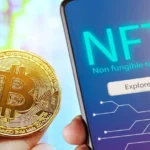Decentralized finance is attempting to build an alternative ecosystem of financial services for those who believe the future lies in crypto. Using smart contracts and the wide range of digital investment tools built on top of them, DeFi, as it’s known, uniquely provides alternative investment opportunities for people from all walks of life.
What’s more, with crypto as volatile as it is, DeFi can be one of the most lucrative investment options for many. Many people are tempted to get involved the moment they hear about concepts such as staking and yield farming, but beware there’s a steep learning curve. Researching and tracking your investments can be a full time job, and it can be stressful if things go awry and we enter a bear market.
One way of taking the pressure off is to use the growing range of user-friendly tools that make it easier to analyze and navigate the growing DeFi ecosystem and find the right investment opportunities.
1. HyperDEX
HyperDEX is one of the most user-friendly DeFi asset management platforms around as it has been designed specifically to reduce the barrier to entry for those who are new to this type of investing. With HyperDEX, there are three kinds of investments, ranging from simple and safe, to more advanced and risky. They include fixed income, algorithm trading and race trading, represented in the shape of “Cubes” that are similar to liquidity pools on other DeFi platforms.
Users can choose the Cube they’re most comfortable with to fit their level of risk tolerance. So if they’re interested in a guaranteed return, the fixed-income option is their best bet.
What’s great about HyperDEX though is that all three Cubes offer advanced options with Hypercubes, which enable the simultaneous investment of the platform’s native HYPER token and potentially, greater rewards.
HyperDEX’s aim is to become a hub for anyone who owns cryptocurrencies to start investing in DeFi with zero knowledge of how it works, and given the way it keeps everything so simple it’s definitely one to watch.
2. Coinbase Wallet
A more familiar name is Coinbase Wallet, which is owned by the popular crypto exchange Coinbase but is not the same as storing your coins on that platform. Rather, Coinbase Wallet is a non-custodial and multicoin wallet that also serves as a dApp browser.
The great thing about Coinbase Wallet is that users are not required to have a Coinbase account to use it. With that, users can securely store and trade their tokens directly on their device, without any need to transfer them to another platform. Using Coinbase Wallet, it’s also possible to earn interest from some tokens.
Finally, Coinbase Wallet serves as a simple gateway to dozens of other Ethereum-based dApps including some of the most popular decentralized exchanges and DeFi platforms.
3. DeFi Saver
The DeFi Saver app can be thought of as a simple to use dashboard through which it’s possible to manage your crypto portfolio. From here, DeFi investors can manage every aspect of their DeFi investments. So, for example, it could be used to refinance DeFi loans, stake tokens, create custom transactions or change to a new lending protocol.
DeFi Saver also has an excellent capability in the shape of its simulation module, which allows new DeFi investors to experiment with various DeFi markets, so they can practise staking coins and trying to make money before they go ahead and do it with their real assets.
4. LiquidityFolio
Another popular tool that’s aimed specifically at liquidity providers is this one, which provides access to popular protocols such as Uniswap, Balancer, Curve, 1inch and others.
Some of the most important features on LiquidityFolio include its easy-to use dashboard that makes it easy to track your portfolio at a glance. It also has pool research tools that allow users to explore prospective pools they’re interested in staking into according to criteria such as fees and impermanent loss.
The main benefit of LiqudityFolio is it enables investors to find the most suitable liquidity pool for the best possible yield for each ERC-20 token they stake.
5. Zerion
For those who prefer to manage their entire DeFi portfolio from a single location, look no further than Zerion. With this app, users enjoy direct access tools such as DeFi indexes and DeFi blue chips that allow them to trade tokens, transfer assets across multiple blockchains and show off their NFT collection, all in one easy to use place.
Zerion supports multiple chains, including Binance Smart Chain, Arbitrum, Optimism and Polygon (and through that, Ethereum). Furthermore, Zerion aggregates Layer 2 blockchains and all major decentralized exchanges.
6. DEFIYIELD
A second all-in-one asset management and DeFi app with strong security is DEFIYIELD, which provides an easy overview of all the user’s assets and also helps them to find new investment opportunities.
The DEFIYIELD dashboard lists all of the user’s DeFi tokens and makes it easy to monitor metrics such as profit, loss, impermanent loss and farming rewards at a glance. It also provides a way to allocate funds across different projects on various blockchains, and best of all, it provides automatic warnings in case a user tries to invest into a known, malicious app.










